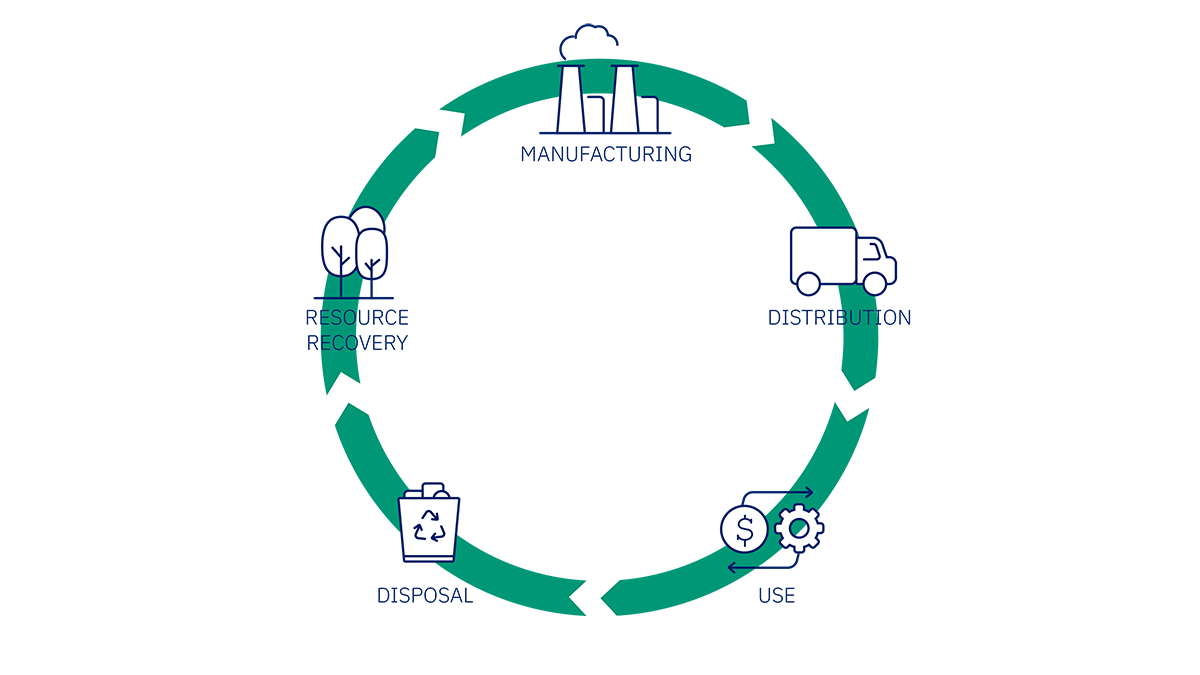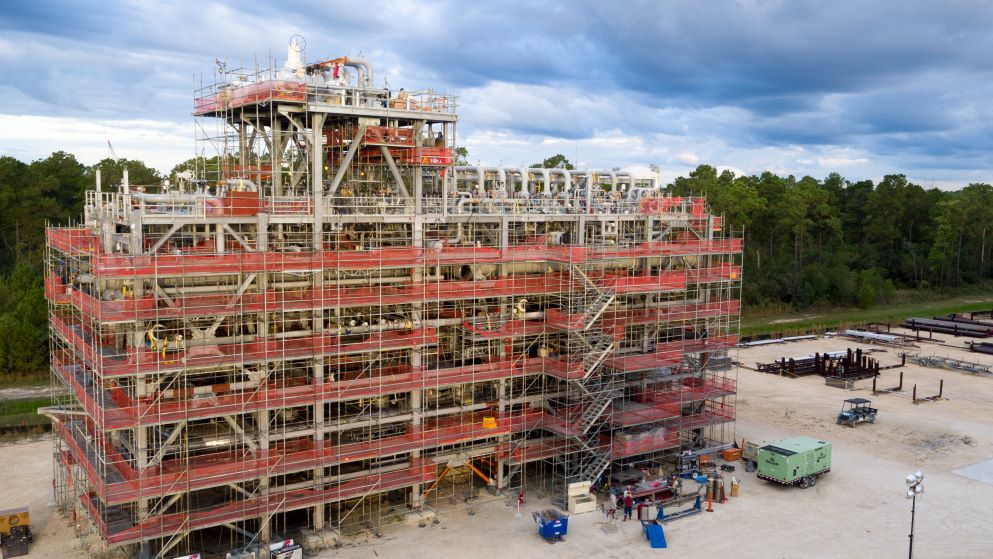Second in a series of posts: It’s a hard-knock life(cycle)
To understand the new hydrogen production tax credits is to understand a bunch of acronyms.
The “IRA” added “Section 45V” to grant hydrogen “PTC’s” based on a “CI” of “GHG’s”, which is determined by performing an “LCA” using “GREET” and incorporating the “GWP’s” from the “IPCC”.
If the above sounds at all confusing, read on.
In our first post on the hydrogen production tax credit, we summarized and explored the definition of “qualified clean hydrogen”. This second post provides an overview of the lifecycle analysis while shedding some light on these acronyms.
45V PTC Recap
The 2022 Inflation Reduction Act (IRA) created the Section 45V production tax credit (45V PTC) for qualified clean hydrogen. The tiered tax credit amount offers higher credit for lower carbon-intensity hydrogen. The lowest tier (up to $0.60 per kg) requires a carbon intensity of less than four kg of CO2e per kg of hydrogen. The highest tier (up to $3.00 per kg) requires the carbon intensity to be less than 0.45 kg of CO2e per kg of hydrogen.
Lifecycle Analysis
LCA or lifecycle analysis assesses the total greenhouse gas (GHG) emissions associated with the production, transportation, and in some cases, the final use of a product.
Different greenhouse gases have different environmental impacts, depending on their unique properties – notably, how long they remain in the atmosphere (their “lifetime”) and their ability to absorb energy (their “radiative efficiency”).
To address these differences, scientists assign a Global Warming Potential (GWP) to each greenhouse gas. The GWP measures how much one ton of a greenhouse gas warms the earth compared to one ton of CO2. (So, the GWP of CO2 is, by definition, one). Figure 1 provides the GWP for methane and nitrous oxide (N2O).
 Figure 1 – Global Warming Potentials1
Figure 1 – Global Warming Potentials1
Multiply each ton of greenhouse gas emitted by its GWP to get the equivalent amount of CO2 emissions – typically expressed as kilograms of CO2e. This is often referred to as a product’s carbon intensity (CI) and is the key result of an LCA.
The impacts of greenhouse gases change as time passes. Experts typically report GWPs on a 20-year and 100-year average basis, with the 100-year GWP being the most commonly cited number.
The reported GWP values also change as scientists refine their analyses. Figure 1 values come from the Intergovernmental Panel on Climate Change’s (IPCC’s) fifth assessment report (AR5) from 2013-14, which is the basis required by the Paris Agreement.
The IPCC released a sixth report (AR6) in 2021, and the GWP values changed slightly. Interestingly, AR6 introduces two different GWPs for methane – a GWP-100 of 29.8 for “fossil” methane and 27.0 for “non-fossil” methane. (We’re scratching our heads on that one).
Well-to-Gate Framework
Two major LCA frameworks exist. The most comprehensive “cradle-to-grave” framework covers raw material extraction through a product’s ultimate use and disposal. The “cradle-to-gate” or “well-to-gate” framework, on the other hand, only covers through the point of production (see Figure 2).

Figure 2 – Lifecycle Assessment Scope Comparison2
The 45V PTC requires a well-to-gate methodology, stating that the lifecycle GHG emissions “shall only include emissions through the point of production”.3
The Department of Energy’s draft Clean Hydrogen Production Standard (CHPS) provides further guidance on what they consider well-to-gate to include (see Figure 3).

Figure 3 – DOE Well-to-Gate Lifecycle Diagram4
While it remains to be seen whether the IRS will adopt the same definition of well-to-gate as DOE, certain items seem clear. For instance, any definition of well-to-gate should exclude transportation of the product away from the production site, along with its final use (e.g., combustion).
However, what about liquification and compression of the hydrogen or hydrogen carrier at the production facility? DOE’s draft CHPS explicitly excludes these, but will the IRS take the same stance? (Recent comment letters submitted to the IRS are somewhat divided on this question).
The GREET Model
The Greenhouse Gases, Regulated Emissions, and Energy Use in Technologies (GREET) model is essentially a giant calculation spreadsheet developed by Argonne National Laboratory beginning in 1995. (We wonder if the original authors anticipated that tens of billions of dollars in new investments would one day hinge on their model).
GREET has two primary models: a fuel-cycle model – which the authors describe as “well-to-pump” (GREET 1) and which is applicable to hydrogen production – and a vehicle-cycle model (GREET 2).
GREET allows users to model the lifecycle emissions of various products using numerous different feedstocks and processes. As one might imagine, the spreadsheets are extensive (the “Inputs” tab alone has something like 1,500 rows and 100 columns). Default values are included, and many items allow for user input values. Some states, including California and Oregon, have developed their own versions of the GREET model.
The 45V PTC requires that “the most recent GREET model … or a successor model (as determined by the Secretary)” will determine emissions6. It remains to be seen if or when a successor model will be developed, but until then, all eyes are on GREET.
Allocation of Emissions to Multiple Products
What if a project is producing multiple different products? Presumably, the total project emissions need to be allocated among them using some justifiable approach.
In its November Request for Comments7, the IRS posed this question and offered several potential approaches:
- System expansion
- Energy-based approach
- Mass-based approach
The mass-based approach seems straightforward, with the emissions pro-rated to each product based on its mass flow rate (lbs. per hour). This would be a favorable approach for the clean hydrogen industry, since hydrogen is the lightest element in the universe.
The energy-based approach also seems straightforward, assigning emissions to each product based on its lower heating value (LHV, typically measured in BTUs per lb.).
The system expansion approach is more complicated. Also known as substitution, this approach first identifies what the co-product theoretically replaces (or substitutes) in the market. Because that substituted product is no longer needed, its lifecycle emissions are avoided as a result of the co-product. These avoided lifecycle emissions are thus credited toward the primary product.
Yet another approach (not mentioned in the IRS Request for Comments) would be to allocate emissions between products based on their economic value.
LCA experts understandably have strong opinions about these allocation methods, and many of these were expressed in recent comment letters to the IRS.
The Summary
Performing a rigorous lifecycle analysis is complicated, and we’d recommend hiring an expert. With that said, hopefully this post gives you enough background to decipher some of those pesky acronyms. Check out future posts in this series as we dive into individual LCA components such as power consumption and natural gas emissions.
Contact us to discuss more about all things LCA and GREET.
Disclaimer:
The information in this blog has been provided by S&B for general information purposes. It does not constitute legal, accounting, tax or other professional advice or services and is presented without any representation or warranty as to the accuracy or completeness of the information. For advice relative to any of the categories stated, recipients should consult their own attorneys, accountants, or other professional advisors.
[1] Figure 1 Source: IPCC AR5 Report; https://www.ipcc.ch/report/ar5/syr/
[2] Figure 2 Source: Adapted from “Life Cycle Assessment” by K. Simonen
[3] IRC Section 45V(c)(1)(B)
[4] Source: DOE CHPS Draft Guidance; https://www.hydrogen.energy.gov/pdfs/clean-hydrogen-production-standard.pdf
[5] Figure 4 Source: greet.es.anl.gov
[6] IRC Section 45V(c)(1)(B)
[7] IRS Notice 2022-58; irs.gov/pub/irs-drop/n-22-58.pdf




